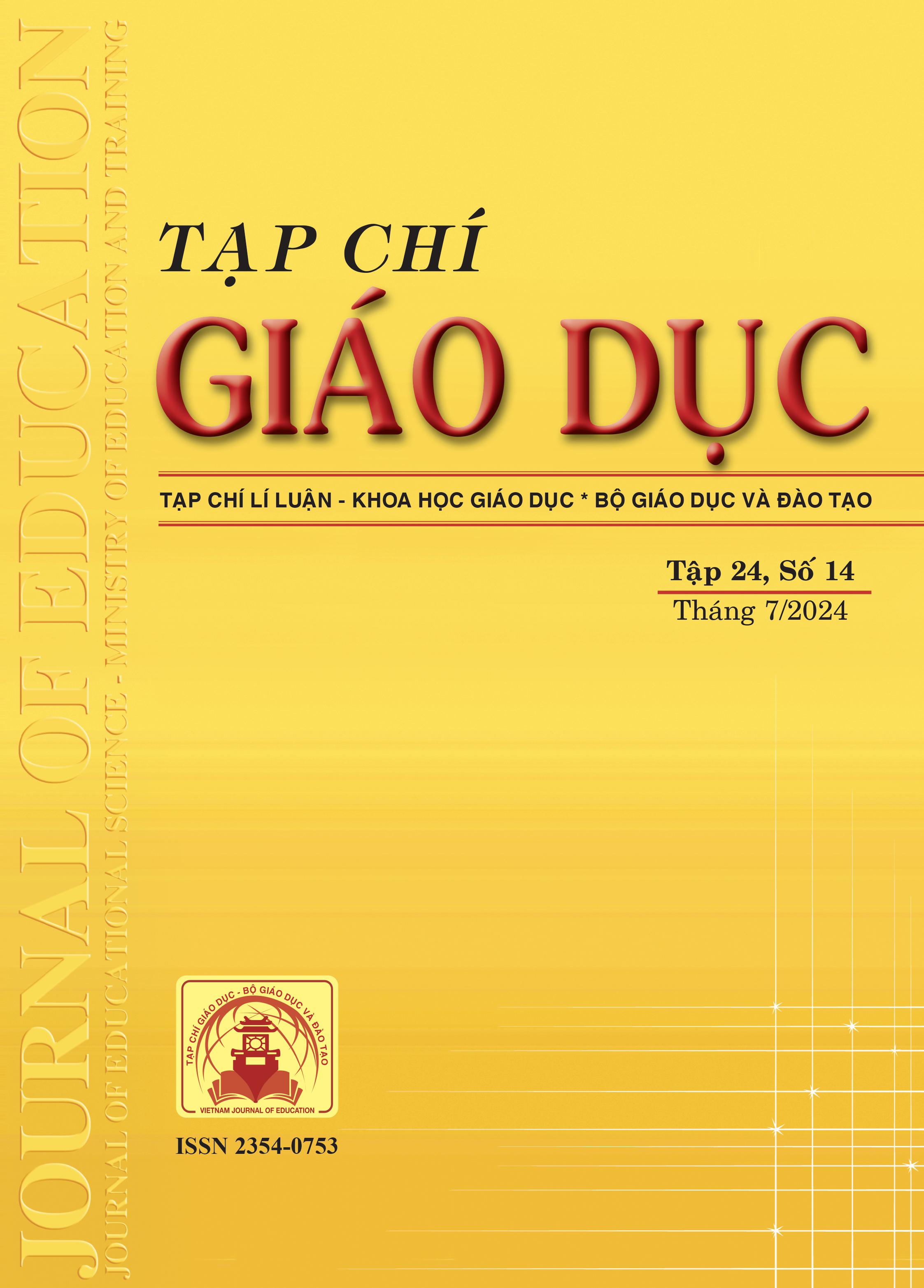Vận dụng quy trình thiết kế kĩ thuật (EDP) trong tổ chức hoạt động giáo dục STEAM cho trẻ mẫu giáo 5-6 tuổi
Tóm tắt
STEAM education in preschool education has received much attention from and has been largely implemented by many preschools. The STEAM educational experience is not only compatible with the characteristics of preschool children, as a form of learning while playing, but is also highly feasible for all ages. However, STEAM education in the direction of engineering design for 5-6 years old has not been studied deeply and widely. Based on a number of theoretical issues, the article proposes the principles and engineering design processes in organizing STEAM educational activities for 5-6 year old preschoolers, illustrating this process with specific examples, helping Preschool teachers approach and improve their capacity to design and organize STEAM educational activities for preschool children. Regarding 5-6 years old, applying the engineering design process in creating children's STEAM activities is completely appropriate and feasible.
Tài liệu tham khảo
Aminah, A. (2019). STEM-STEAM in Early Childhood Education in Malaysia. Presented at Third International Conference of Child Research Network Asia (CRNA). https://www.childresearch.net/projects/fullpaper/2020_03.html
Ata-Aktürk (2019). Development of a STEM based engineering design curriculum for parental involvement in early childhood education . Graduate School of Social Sciences. Early Childhood Education. Middle East Technical University.
Cunningham, C. M., & Lachapelle, C. P. (2014). Designing engineering experiences to engage all students. Journal of the international society for design and development in education. http://www.eductionaldesigner.org/ed/volume3/isue9/article31
DeJarnette, N. K. (2018). Implementing STEAM in the Early Childhood Classroom. European Journal of STEM Education, 3(3), 18. https://doi.org/10.20897/ejsteme/3878
Fleer, M. (2022). The genesis of design: learning about design, learning through design to learning design in play. International Journal of Technology and Design Education, 32(3), 1441-1468.
Henriksen, D., Mehta, R., & Mehta, S. (2019). Design Thinking Gives STEAM to Teaching: A Framework That Breaks Disciplinary Boundaries. In Khine, M., Areepattamannil, S. (eds), STEAM Education. Springer, Cham. https://doi.org/10.1007/978-3-030-04003-1
Hoàng Thị Phương (2020). Đặc trưng của giáo dục STEAM cho trẻ mầm non - khả năng tích hợp vào chương trình giáo dục mầm non. Tạp chí Khoa học, Trường Đại học Sư phạm Hà Nội, 65(11A), 108-116.
Nguyễn Thành Hải (2019). Giáo dục STEM/ STEAM - Từ trải nghiệm thực hành đến tư duy sáng tạo. NXB Trẻ.
Nguyễn Thanh Nga, Tạ Thanh Trung (2021). Giáo dục STEAM và tiềm năng vận dụng quy trình tư duy thiết kế để triển khai giáo dục STEAM. Tạp chí Khoa học, Trường Đại học Sư phạm Thành phố Hồ Chí Minh, 18(2), 310-320.
Nguyễn Thị Mai Lan, Nguyễn Văn Linh (2021). Phát triển năng lực thiết kế kĩ thuật cho học sinh trong dạy học Công nghệ ở trường trung học phổ thông theo yêu cầu của Chương trình giáo dục phổ thông 2018. Tạp chí Khoa học, Trường Đại học Thủ đô Hà Nội, 52, 81-91.
Nguyễn Văn Khôi (2020). Phát triển kĩ năng thiết kế kĩ thuật của học sinh trong dạy học môn Công nghệ phổ thông. Tạp chí Giáo dục, 473, 36-39; 27.
Trần Viết Nhi, Nguyễn Tuấn Vĩnh, Nguyễn Thị Bích Thảo (2020). Bồi dưỡng năng lực tổ chức hoạt động giáo dục STEAM cho giáo viên mầm non. Tạp chí Khoa học, Trường Đại học Sư phạm Hà Nội, 65(11A), 117-124.
Vũ Thị Kiều Trang (2022). Thực trạng giáo dục STEAM cho trẻ mẫu giáo 5-6 tuổi ở một số trường mầm non tại thành phố Tuyên Quang, tỉnh Tuyên Quang. Tạp chí Giáo dục, 22(8), 19-24.
Zhang, M., Yang, X., & Wang, X. (2019). Construction of STEAM Curriculum Model and Case Design in Kindergarten. American Journal of Educational Research, 7(8), 485-490. https//doi.org/10.12691/education-7-7-8
Tải xuống
Đã Xuất bản
Cách trích dẫn
Số
Chuyên mục
Giấy phép

Tác phẩm này được cấp phép theo Ghi nhận tác giả của Creative Commons Giấy phép quốc tế 4.0 .












